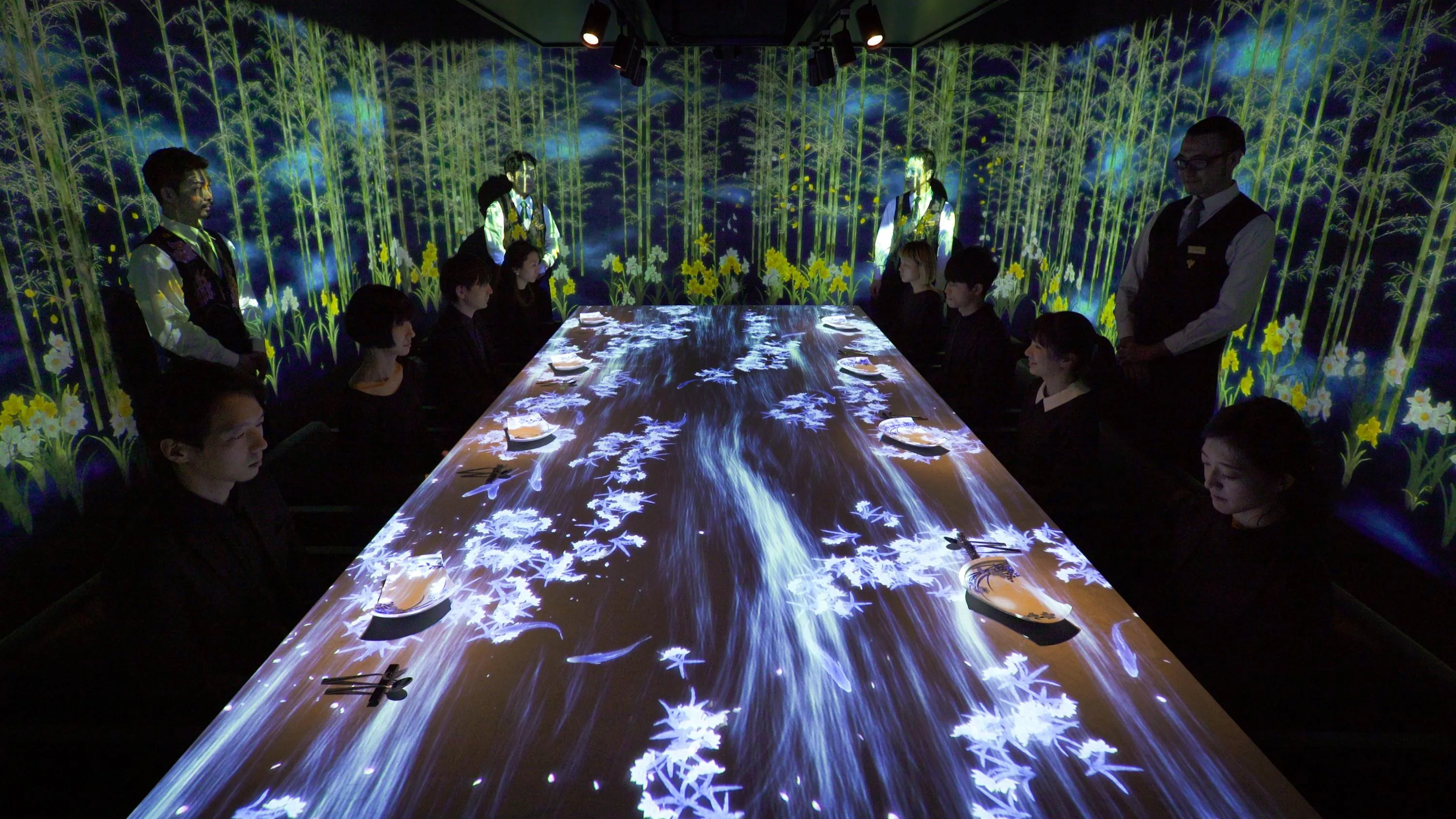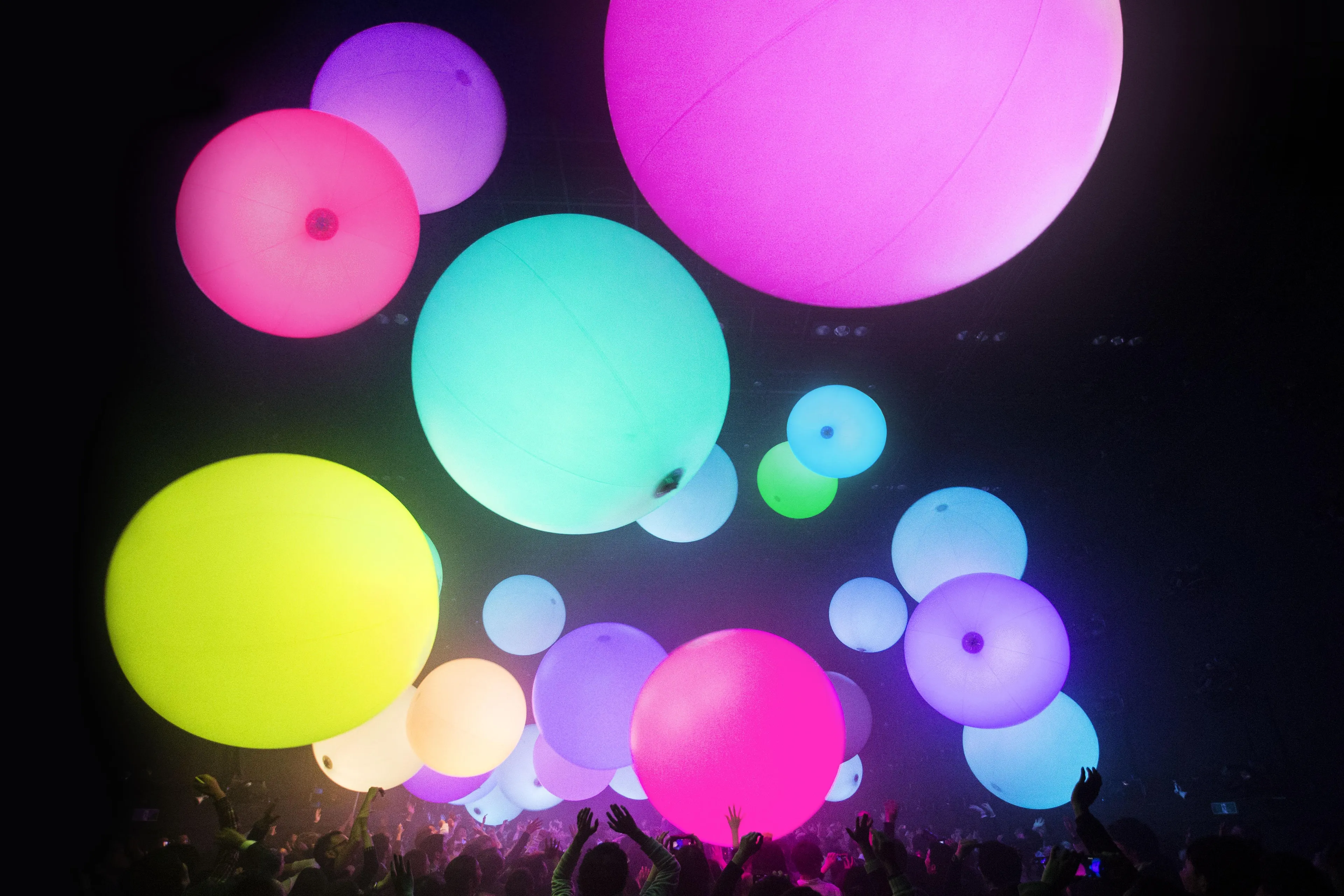
Spatial Sculpture with Ambiguous Boundaries
2009
Why do we feel the existence of life in the vortices of the ocean?
The boundary surface of the vortex in the ocean is ambiguous, and the existence of the vortex is maintained even if a person were to enter it.
Even if the components of an artwork are temporally and spatially separate, in other words moving freely or moved around by people, when a density and continuity or order are formed in the whole or in parts, it is perceived as a single entity, and even life-like. The physical position of the components become freed, and the surface boundary of the work's existence becomes ambiguous.
Water, bubbles, fog, and mist, which are free-moving components to begin with, are recognized as a single entity when density and continuity or order, or cognitive continuity and order, are formed in the whole or in parts. Since the components move freely, the boundary surface with our bodies becomes ambiguous.
FEATURED WORKS
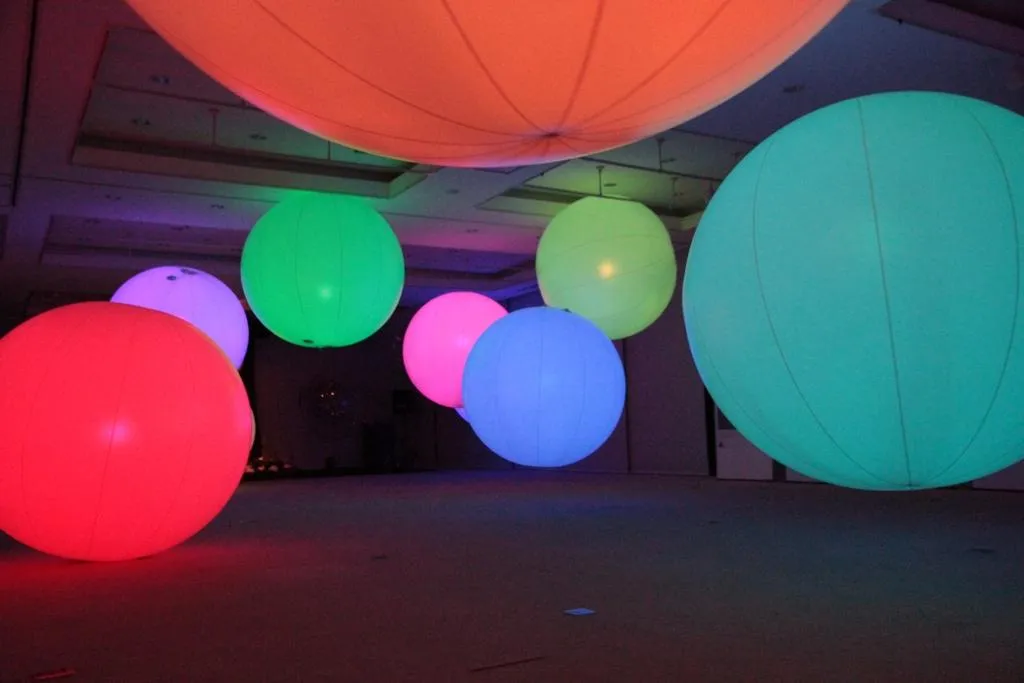
"teamLabBall" is an interactive interface that changes color and brightness and emits different sounds depending on the actions of the people around it.
When you touch the spheres, it causes effects such as a change in color, or the generation of a sound. Each sphere is synchronized by wireless P2P (Peer to Peer), so it is possible to change the colors of all of the spheres or to change the color of the lighting of the space. Furthermore, it is possible for directors/designers to change the colors remotely without touching the spheres. Anybody present can take part in the design of the space by tossing the floating spheres. The moment you toss the sphere, you take center stage and that moment is shared by everyone in the space.
Utilizing all teamLabBalls as a common interface allows the creation of a digital space where people can get immersed and feel emotionally involved.
※teamLabBall patent pending.
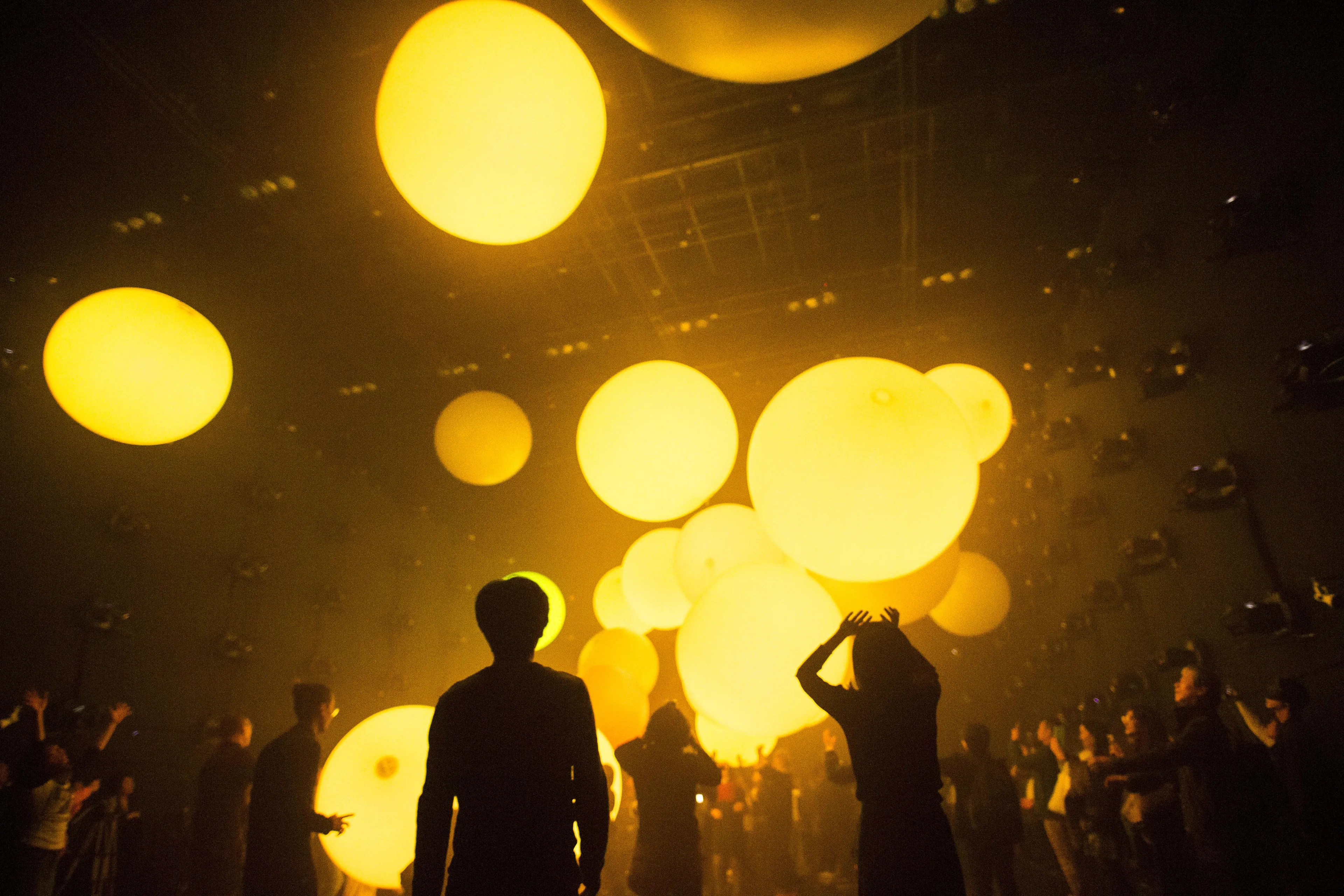
Synchronizing and Transforming Space - teamLabBall
teamLab, 2017, Interactive Installation, Sound: Hideaki Takahashi, DAISHI DANCE
CONCEPT Spatial Objects
The digital domain allows individual and independent elements of an artwork to connect and behave as a group. Elements are able to move freely within the group and change position. When the elements are connected within a spatial network, they form a unified artwork—a Spatial Object that can be physically entered into by the viewer.
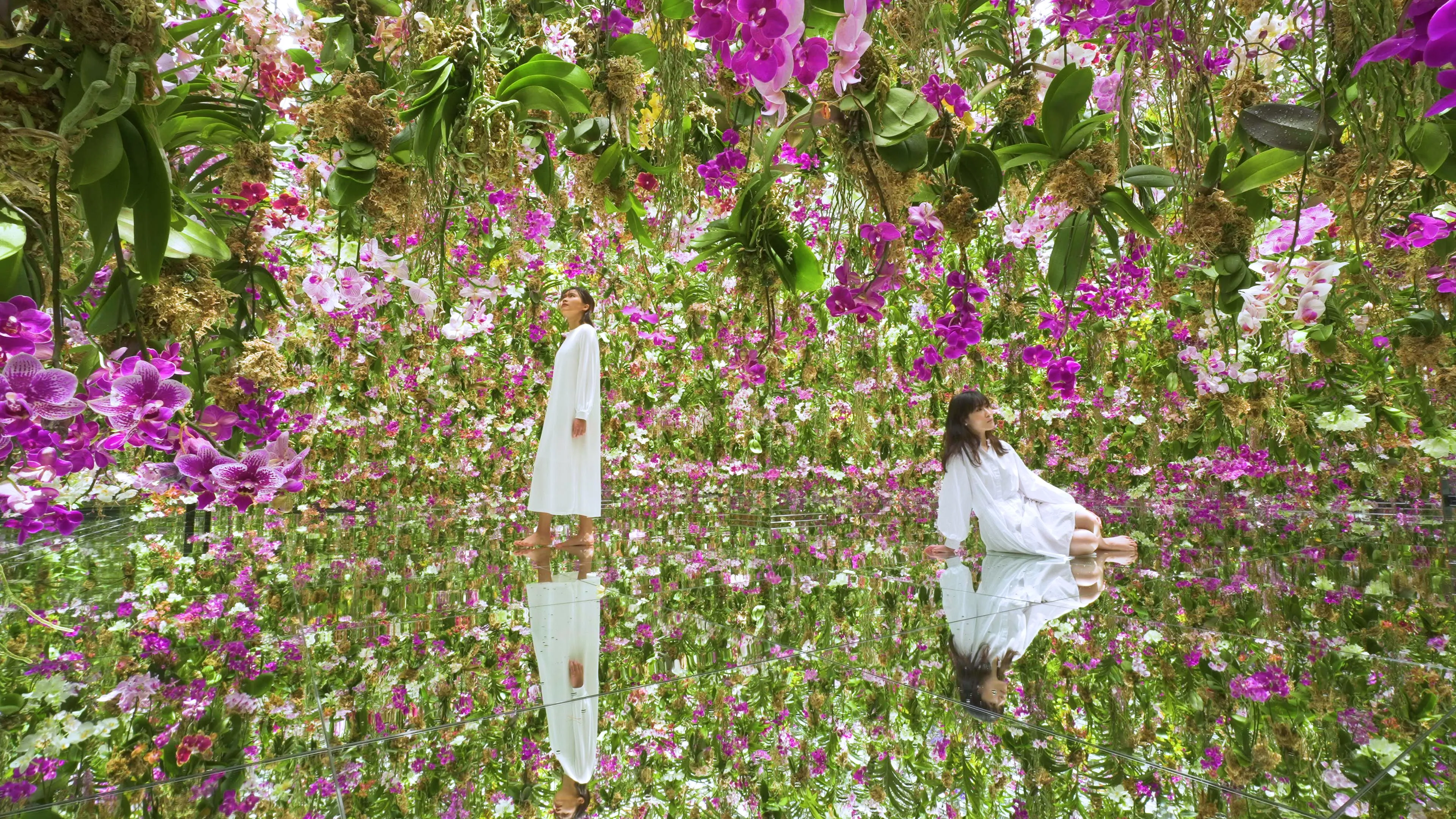
Floating Flower Garden: Flowers and I are of the Same Root, the Garden and I are One
teamLab, 2015-, Interactive Installation, Endless, Sound: Hideaki Takahashi
This floating flower garden consists of a three-dimensional mass of flowers.
The artwork space is completely filled with flowers, but as the flowers float up above people, open spaces are created. Because of this, people are able to freely wander around the flower mass space. If you encounter other people within the artwork, your space will connect with theirs and become one single space.
Zen gardens are said to have been created as a place for groups of Zen priests to carry out training in order to become one with nature.
There is a Zen kōan (a question or story that is part of Zen priests’ theological training) called “Nansen’s Flower”. Someone asked the monk Nansen about the famous saying, “Heaven and I are of the same root. All things and I are of the same substance”, remarking on how wonderful it was. Nansen, pointing to a flower in the garden, said, “People these days see this flower as if they were in a dream”.
In this work, people immerse themselves in flowers, becoming one with the garden. When someone continues to look at a flower closely, the flower looks back. At that moment, they become one with the flower and may truly see flowers for the first time.
The flowers in this artwork are orchids. Most orchids are able to grow without soil by absorbing water from the air. The flowers in this artwork are alive, growing, and blooming with each passing day. It could be said that they are growing in mid-air.
Although flowering plants were the last of the plant species to appear on earth, at least 220,000 of the 250,000 terrestrial plant species are flowering plants. Evolution has favored diversity, and it can be said that flowers were born to produce diversity. Orchids were flowering plants that most enjoyed diversity, and it is said that approximately 10% of all plant species belong to the orchid family. Because of their diversity, many orchids evolved to become most adapted to live on rocks and trees instead of land with soil where other plants grew abundantly. In an area without soil, in other words, traditionally a least favorable environment for plants, orchids evolved to be most adapted for a world without competition. They are thought to have appeared at a later stage of evolution compared to other plants, and continue to diversify to this day, making us wonder what evolution chose to favor.
Orchids are known to have co-evolved with certain pollen-carrying insects. The flowers’ aromas become stronger at the time of day when the partner insects are active. Because of this, the scent of the artwork space changes each moment between morning, day, evening, and night. Since many of the orchids in this work are partnered with nocturnal insects, the tightly-packed orchids produce a powerful fragrance at night.
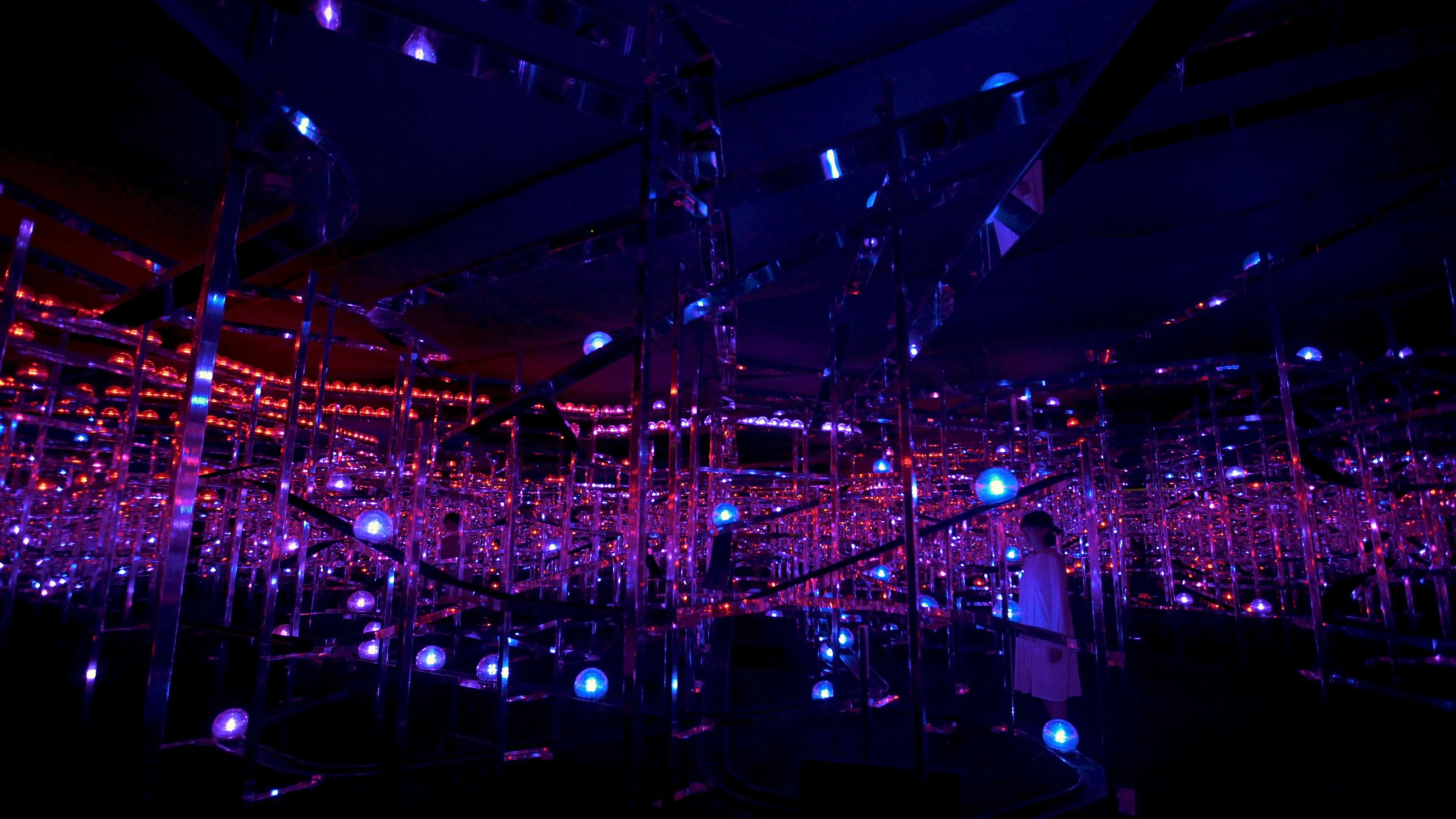
teamLab, 2019, Interactive Installation, LED, Endless, Sound: teamLab
The light vehicles are completely autonomous, they move around a track continually, changing speed in response to the vehicle in front of them, and sometimes slowing down when they need to replenish their energy.
When people stand close to the vehicles they shine brightly and emit a sound tone which resonates out to the nearby vehicles, the light and sound resonates out continuously in response to the person’s presence. When people are not close by the vehicles glow as though gently breathing.
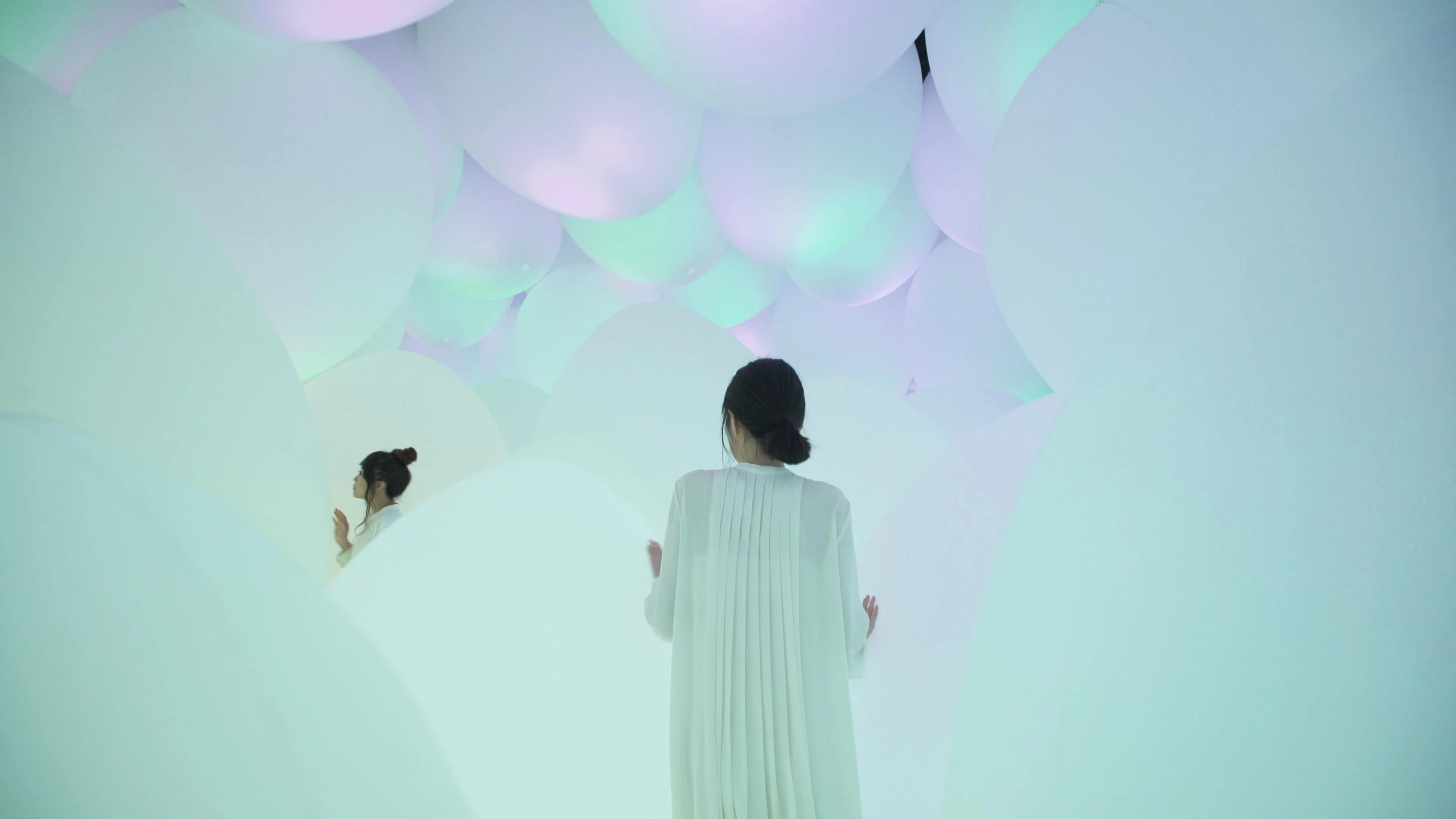
Weightless Forest of Resonating Life - Flattening 3 Colors and 9 Blurred Colors
teamLab, 2019, Interactive Digital Installation, Sound: Hideaki Takahashi
The space is filled with ovoids of light. People move through the ovoids and enter the space.
People recognize the multi-dimensionality of the space when the group of ovoids shine with various blurred colors, but the space feels flat when the ovoids are monochromatic. As the space changes between three dimensions and two dimensions, the whole body is immersed in both a three dimensional space and a flat plane.
When people strike the ovoids of light, it causes the color of the ovoid to change, and a tone specific to that color resonates out. The surrounding ovoids will respond, and the same color and tone will resonate radially throughout the space.
Each ovoid moves freely, but no matter where it is, the behavior of light is maintained across the entirety of the space. Therefore, the light behaves as a group and can be thought of as one three-dimensional existence. The light resonates out spherically across the space from the impacted ovoid. While recognizing the light’s three dimensional existence, people push through the ovoids to enter into that existence.
Since the ovoid colors are produced by light, it is possible to create 9 blurred colors (light in water, sunlight on water plants, morning glow, morning sky, sky at twilight, peach, plum, iris, and spring maple), as well as 3 colors that flatten the space (blue, red, and green), resulting in a total of twelve colors.

